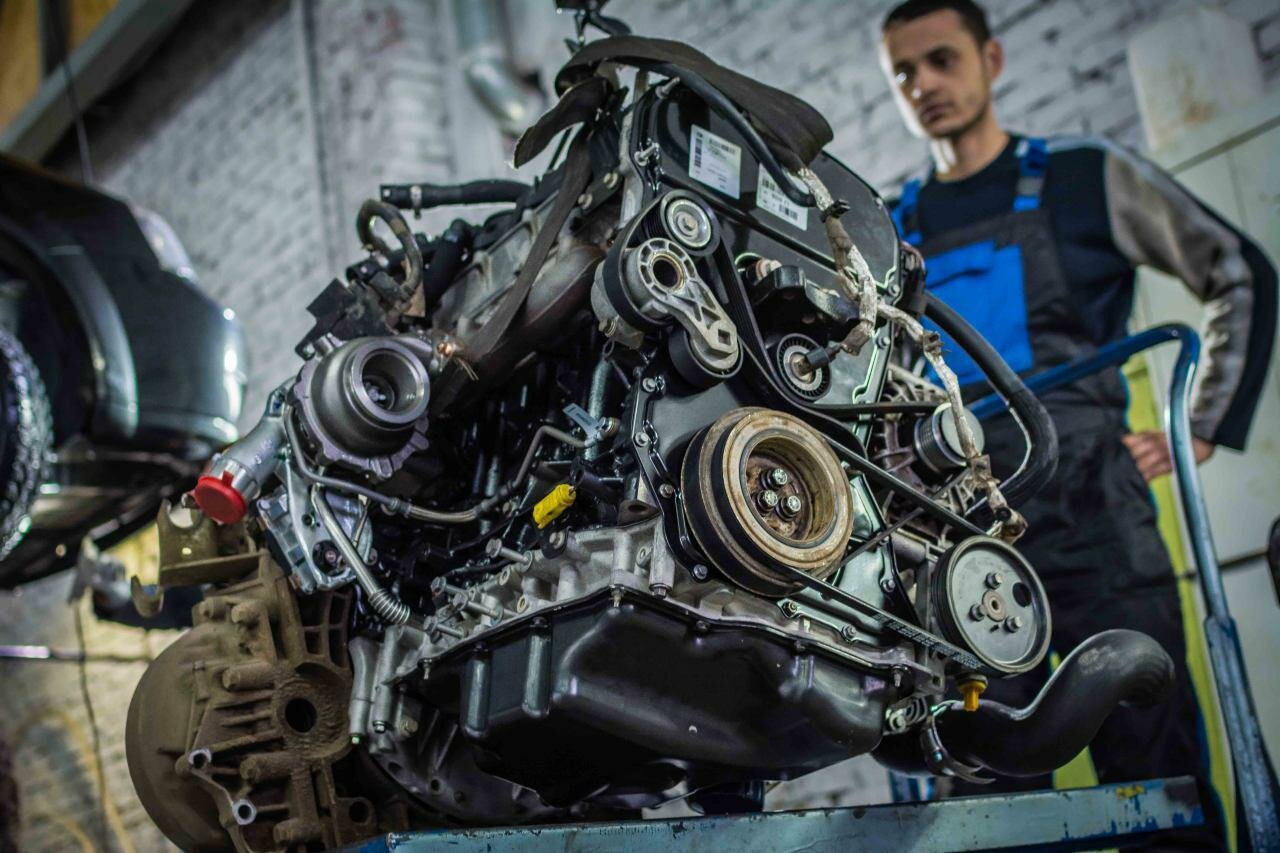The 3.6-liter engine found in the 2015 Jeep models has garnered attention for a variety of issues that can arise over time. Many owners have reported a range of symptoms that can indicate underlying problems with this engine. Understanding these symptoms is crucial for any Jeep owner, as they can lead to more significant issues if left unaddressed.
This engine, while generally powerful and capable, has its fair share of quirks. From unusual noises to performance drops, the signs can vary significantly. Some drivers may notice a rough idle, while others might experience engine stalling or misfiring. Each of these symptoms can signal a different problem, and recognizing them early can save time and money down the line.
Common Symptoms
Rough Idle
A rough idle can be one of the first noticeable symptoms. When the engine is running, it should be smooth and steady. If you feel vibrations or hear irregular sounds, it could indicate issues with the fuel injectors, spark plugs, or even the engine’s timing.
Engine Stalling
Stalling is another serious symptom that can occur unexpectedly. If your Jeep shuts off while driving or at a stoplight, it’s not just inconvenient; it’s dangerous. This could be related to fuel delivery problems, electrical issues, or a failing sensor.
Misfiring
Misfiring can manifest as a lack of power during acceleration or a noticeable shaking of the vehicle. This can be caused by faulty spark plugs, ignition coils, or fuel injectors. If you experience this, you may also notice a check engine light illuminating on your dashboard.
Unusual Noises
Any strange sounds coming from the engine bay should raise a red flag. Common noises include knocking, ticking, or grinding. These sounds can indicate serious issues such as worn bearings, timing chain problems, or even internal engine damage.
Poor Fuel Economy
If you notice that your fuel economy has taken a hit, it might be due to engine inefficiencies. This can be a result of various factors, including air filter blockages, fuel system issues, or problems with the engine’s computer system.
Overheating
Overheating can lead to catastrophic engine failure if not addressed immediately. If your temperature gauge is consistently high, or you see steam rising from under the hood, it’s crucial to pull over and investigate. This could be due to a faulty thermostat, water pump failure, or coolant leaks.
Check Engine Light
The check engine light is a catch-all warning. If it illuminates, it’s time to get your vehicle scanned for trouble codes. Ignoring this light can lead to more severe problems down the road.
Vibration During Acceleration
Experiencing vibrations while accelerating can indicate issues with the engine mounts or drivetrain components. This can affect your vehicle’s handling and safety.
Conclusion
Being aware of these symptoms can help Jeep owners stay ahead of potential engine problems. Regular maintenance and paying attention to how your vehicle performs can make a significant difference in longevity and reliability.
Understanding the Issues with the Engine
The 3.6-liter engine in the 2015 Jeep models has been a topic of discussion among owners and mechanics alike. While it offers decent power and performance, several issues can arise that can affect its reliability. Here’s a breakdown of the common problems, their potential causes, and what owners are saying about their experiences.
Common Problems and Their Causes
| Problem | Possible Causes |
|---|---|
| Rough Idle |
|
| Engine Stalling |
|
| Misfiring |
|
| Unusual Noises |
|
| Poor Fuel Economy |
|
| Overheating |
|
| Vibration During Acceleration |
|
Owner Opinions from the Forums
Many Jeep owners have taken to forums to share their experiences with the 3.6-liter engine. Here are some common sentiments:
– Rough Idle: “I noticed my Jeep shaking at stops. After some research, I found out it might be the spark plugs. It’s frustrating because I just had them changed last year.”
– Stalling Issues: “My engine stalled while merging onto the highway. It was terrifying. I took it to the dealer, and they said it could be a sensor issue. I wish I had known sooner.”
– Misfiring: “I felt a loss of power while driving. The check engine light came on, and it turned out to be a bad ignition coil. It’s a hassle to fix, but at least it wasn’t too expensive.”
– Unusual Noises: “I’ve been hearing a ticking noise. I thought it was normal wear and tear, but it turned out to be a timing chain issue. I’m worried about long-term damage.”
– Fuel Economy: “I used to get great mileage, but now it feels like I’m filling up every week. I checked the air filter, and it was clogged. Simple fix, but annoying.”
– Overheating: “My Jeep started overheating out of nowhere. I found a coolant leak, and it’s been a headache trying to track it down. I’m keeping a close eye on it now.”
– Vibrations: “I felt vibrations when accelerating. It turned out to be the engine mounts. I didn’t expect that to be the problem, but I’m glad I caught it early.”
Final Thoughts
The 2015 Jeep 3.6 engine has its share of problems, and being aware of them can help owners take proactive measures. Regular maintenance and listening to your vehicle can go a long way in preventing more severe issues down the road.
Recalls and Technical Service Bulletins for the Engine
When it comes to the 2015 Jeep 3.6 engine, there have been several recalls and Technical Service Bulletins (TSBs) issued that address common issues reported by owners. Understanding these recalls and TSBs is essential for Jeep owners to ensure their vehicles are safe and functioning properly.
Recalls
Recalls are issued when a manufacturer identifies a safety-related defect in a vehicle. For the 2015 Jeep models equipped with the 3.6-liter engine, a few recalls have been documented:
- Recall for Ignition Switch Issue: This recall was issued due to a potential ignition switch problem that could cause the engine to stall unexpectedly. The affected vehicles were recalled to have the ignition switch replaced to prevent stalling.
- Recall for Fuel Pump Failure: Some 2015 Jeep models experienced issues with the fuel pump, which could lead to engine stalling and increased risk of accidents. Affected vehicles were recalled for fuel pump replacement.
Top views |
|
|---|---|
 |
Oil, Timing Chains, Pistons: What Really Kills an Engine Prematurely? |
 |
How to Choose a Car with a Reliable Engine: Used Car Market Hacks That Actually Work |
Technical Service Bulletins (TSBs)
TSBs are issued by manufacturers to inform dealerships and service centers about known issues and recommended fixes. They are not mandatory recalls but provide guidance on how to address common problems. Here are some relevant TSBs for the 2015 Jeep 3.6 engine:
| TSB Number | Issue Addressed | Recommended Action |
|---|---|---|
| 18-046-15 | Engine Misfire | Inspect and replace faulty ignition coils and spark plugs. |
| 18-017-15 | Rough Idle | Clean fuel injectors and check for vacuum leaks. |
| 18-056-15 | Overheating | Inspect the cooling system for leaks and replace the thermostat if necessary. |
| 18-045-15 | Vibration During Acceleration | Check engine mounts and drivetrain components for wear. |
Importance of Addressing Recalls and TSBs
Ignoring recalls and TSBs can lead to more significant problems down the line. Here are a few reasons why addressing these issues is crucial:
- Safety: Many recalls are issued to address safety concerns that could lead to accidents or injuries.
- Performance: Following TSB recommendations can help maintain engine performance and fuel efficiency.
- Resale Value: Keeping up with recalls and TSBs can help maintain the vehicle’s resale value by ensuring it is in good working condition.
In summary, being aware of recalls and TSBs related to the 2015 Jeep 3.6 engine can help owners take proactive steps to address potential issues. Regularly checking for updates from the manufacturer can ensure that your vehicle remains safe and reliable.




0 Comments